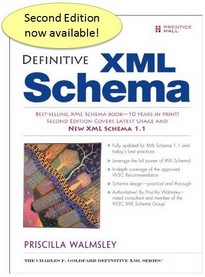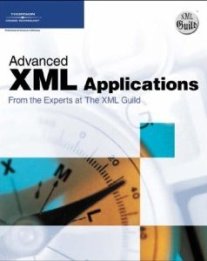resolution-body
Container for the actual words that comprise the content of the resolution.
Element information
Content
- Sequence [1..1]
- pagebreak [0..1]Used to force a new page in the output. Should be used very rarely.
- section [0..*]A hierarchical structure of a measure. This is usually the top level contained with the legislative body. Levels contained within sections are subsections, paragraphs, subparagraphs, clauses, subclauses, items, and subitems. Sections are normally enumerated with a numeric value followed by a period (e.g., 1.). The formatting of a section (structure of legislation) will be according to the rules of the style (such as OLC style or United States Code Style) in effect. The style will control such display issues as the fonts and highlighting used, the margins, and the indentation levels. The style (and the numerical order of the section (structure of legislation) within its containing structure) will also control generation of text, for example, the word “Section”, “Sec.”, or “§” before the enumerator and any punctuation or spacing surrounding or following the enumerator. In so doing, the style will ensure that a period always follows the abbreviation “Sec”, but not the word “Section”, and that the appropriate punctuation follows the enumerator. Accordingly, such punctuation will not be keyed and will not be part of the data. Any necessary punctuation and spaces following the header will also be generated for display or printing. For example, when a section (structure of legislation) follows OLC style, a generated period will follow the header.
- Choice [0..*]
- divisionA hierarchical structure of a measure. If present, usually the top-level hierarchical structure, containing titles (structure of legislation) within it. The formatting of a division (structure of legislation) will be according to the rules of the style (such as OLC style or United States Code Style) in effect. The style will control such display issues as the fonts and highlighting used, the margins, and the indentation levels. The style will also control generation of text, for example, the word “Division ” before the enumerator and any punctuation or spacing surrounding or following the enumerator or the header. Accordingly, such punctuation will not be keyed and will not be part of the data.
- titleA hierarchical structure of a measure, frequently the top-level hierarchical structure inside the body of the measure, or second only to the division (structure of legislation) level. Titles (structure of legislation) and sections (structure of legislation) are the main building blocks of legislation. The formatting of a title (structure of legislation) will be according to the rules of the style (such as OLC style or United States Code Style) in effect. The style will control such display issues as the casing, fonts and highlighting used, the margins, and the indentation levels. The style will also control generation of text, for example, the word “Title ” before the enumerator and any punctuation or spacing surrounding or following the enumerator. Any necessary casing, punctuation, and spacing following the header will also be generated for display or printing. For example, when a title (structure of legislation) follows OLC style, the display or print system will generate a uppercased centered header with no punctuation following. Note: An appropriations account is generally described by a title (structure of legislation), but in some instances the account (structure of legislation) element should be used, e.g., when several accounts are grouped together within “General Provisions” which is considered the title (structure of legislation). Note: In these DTDs, a <title> does not refer to a subcaption or heading. The element <title> is a very specific subdivision of a legislative measure. The element header and subheader should be used to describe a headings or subcaptions.
from type resolution-body-model
Attributes
| Name | Occ | Type | Description | Notes |
|---|---|---|---|---|
| style | [0..1] | style-attribute-values | Identifier for the style of format to be used for a measure, e.g., Office of Legislative Counsel style, Tax style, “Traditional” style, etc..The style will determine the fonts, margins, indent levels, punctuation to be used with enumerators, and other display and typographic variables. Thus, a title (structure of legislation) or section (structure of legislation) set in two different styles could look very different on screen or paper, even though the structures are the same. This attribute can be used to create the same effect that used to be created using GPO’s subformat facility. | Default value is "OLC". from group style-attributes |
| changed | [0..1] | Anonymous | Has this ENTIRE structural element (such as a Section (structure of legislation), Title (structure of legislation), etc.) been added or deleted?Note: Use the <added-phrase> and <deleted-phrase> elements for changes inside a structure that are less than the full structure.This attribute is used to mark entire structures that should be made typographically distinct because they have been added to or deleted from a measure. In contrast, the added phrase <added-phrase> and deleted phrase <deleted-phrase> elements are used to indicate changes within a structure that are less than the full structure, sometimes as little as a word, a number, or a few letters.A structure (such as a title or a section) that has been marked as changed using this attribute is usually presented in a different typographic style to indicate the change. Material that has been inserted (added) is typically in italics. Material that has been removed (deleted) is typically struck through. | |
| committee-id | [0..1] | xsd:anySimpleType | The id of a working subdivision of a chamber, which prepares legislation or conducts investigations | |
| reported-display-style | [0..1] | Anonymous | ||
| display-resolving-clause | [0..1] | Anonymous | Determines if the resolving-clause in a resolution is visible or not. | Default value is "yes-display-resolving-clause". |
| id | [0..1] | xsd:ID | Unique name for the element so that it can be referenced.Provides the name of a particular element, so it can be distinguished from all other elements of the same type, for example, naming one particular section (structure of legislation) so that applications can point to it and distinguish between it and the other perhaps hundreds of other sections (structure of legislation) in the same document. |
Used in
- Anonymous type of element resolution
- Anonymous type of element resolution


